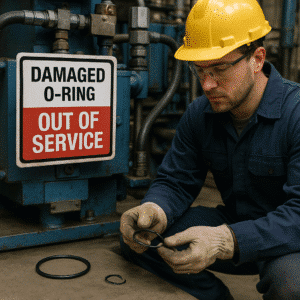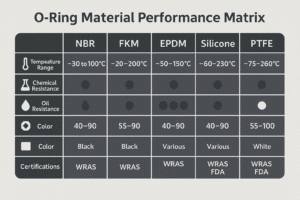Selecting the wrong type of oil seal can lead to lubricant loss, contamination, and equipment failure. How do you decide between a double-lip and a single-lip oil seal?
Double-lip oil seals provide extra protection against contaminants, while single-lip seals are ideal for standard applications with clean environments.
Understanding the difference between these two types of seals is essential for proper application, especially in machinery exposed to varying operating conditions.
What is the structural difference between double-lip and single-lip oil seals?
Oil seals are designed to prevent leakage and keep contaminants out, but their structure affects how well they perform under specific conditions.
Single-lip seals have one sealing lip for oil retention. Double-lip seals feature an additional dust lip to block external contaminants.
For a detailed look at designs, explore our Sello de aceite TG4 (double-lip) and Sello de aceite TC (single-lip) product pages.
When is a single-lip oil seal sufficient?
Not all applications require advanced sealing. In many clean or enclosed environments, a single-lip oil seal performs reliably.
Single-lip seals are appropriate for moderate-speed systems operating in clean, oil-tight environments without significant dust or external contamination.
Common uses include gearboxes, electric motors, and applications where internal lubrication is well maintained and the risk of dirt ingress is minimal.
In which applications are double-lip oil seals recommended?
Some machines operate in conditions where external contaminants like dust, dirt, or water are common.
Double-lip seals are recommended in contaminated or outdoor environments where additional protection against ingress is required.
These seals are widely used in agriculture, off-road vehicles, mining, and construction equipment, where debris exposure is frequent. View more in our oil seal product range.
How does the second lip affect friction and wear?
The dust lip in double-lip seals contacts the shaft, which can slightly increase friction compared to single-lip versions.
Double-lip seals may cause marginally higher wear and require more frequent shaft inspections in high-speed systems.
When used in systems with proper shaft finish and precision seal selection, the wear impact remains minimal while improving protection.
Can single-lip seals be converted to double-lip seals?
In retrofit or repair scenarios, users may want to upgrade their seal protection.
Yes, in many cases single-lip seals can be replaced with double-lip designs of the same size, as long as the application allows for additional lip pressure.
Consult with your seal supplier or maintenance technician to ensure the shaft condition supports the added lip without compromising performance.
Conclusión
Double-lip seals are ideal for contamination-heavy environments, while single-lip seals offer sufficient sealing in clean, enclosed systems. Correct application of each ensures longevity and reliability of equipment.
Need help choosing the right oil seal for your application?
Hengoseal offers a wide selection of single and double-lip oil seals for industrial, automotive, and heavy-duty applications.
Correo electrónico: [email protected]
WhatsApp: +86 17622979498
Related topic
- TG4 Oil Seal: Double Lip Skeleton Design & Best Use Cases
- Cómo instalar un sello de aceite sin fugas: guía paso a paso
- Sellos de aceite vs. sellos antipolvo: ¿cuál necesitas?
- Why High-Pressure Oil Seals Are Essential for Motors & Pumps?


